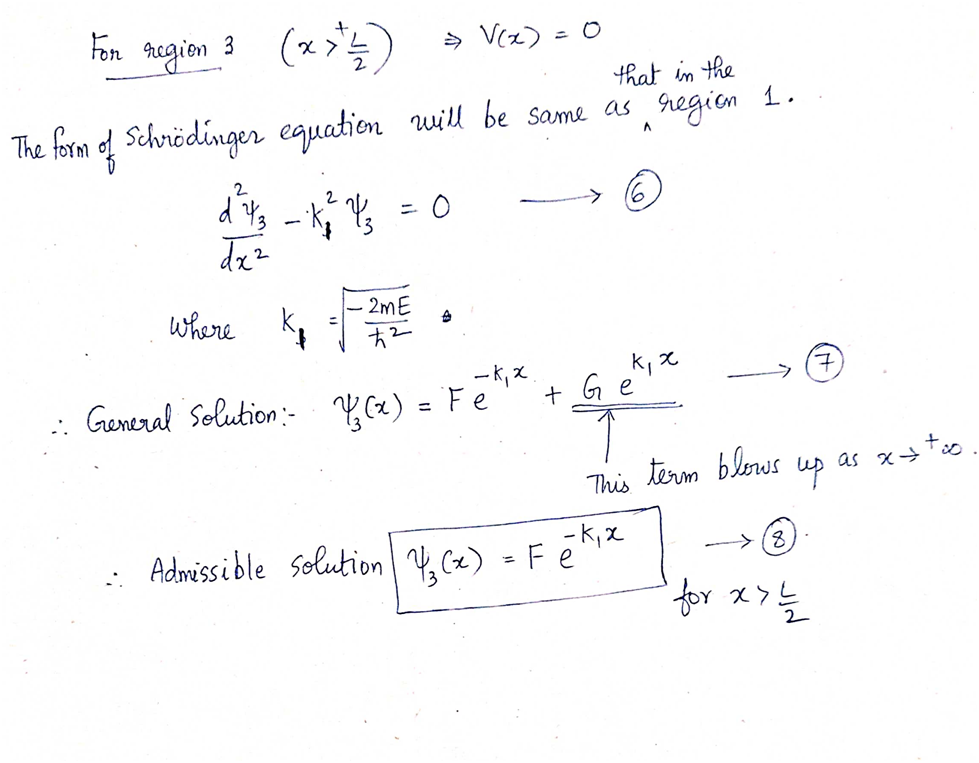In this equation we will consider a finite potential well in which V = −V0 in the interval −L/2 ≤ x ≤ L/2 , and V = 0 ( where V0 is a postive real number ). the time-independent Schrödinger equation in the classicaly allowed and classically forbidden regions i have if needed see attached: b) State the conditions that the wavefunction needs to obey at x = ±L/2 , as well as in the limits x → ± ∞.
In this equation we will consider a finite potential well in which V = −V0 in the interval −L/2 ≤ x ≤ L/2 , and V = 0 ( where V0 is a postive real number ). the time-independent Schrödinger equation in the classicaly allowed and classically forbidden regions i have if needed see attached: b) State the conditions that the wavefunction needs to obey at x = ±L/2 , as well as in the limits x → ± ∞.
Related questions
Question
In this equation we will consider a finite potential well in which V = −V0 in the interval −L/2 ≤ x ≤ L/2 , and V = 0 ( where V0 is a postive real number ).
the time-independent Schrödinger equation in the classicaly allowed and classically forbidden regions i have if needed see attached:
b) State the conditions that the wavefunction needs to obey at x = ±L/2 , as well as in the limits x → ± ∞.

Transcribed Image Text:For region 3 (x > ² ½)
that in the
The form of Schrödinger equation will be same as region 1.
A
..
2
d'y's
dx²
where
2
⇒ V(x)
2mE
K₁ - - 2 ME
ħ2
0
A
General Solution: ₂(x) = Fe
+
k₁ x
Ge
This term blows
Admissible solution ₁(x) = Fékix
8
for x > ≤
up
as x++o
Expert Solution
This question has been solved!
Explore an expertly crafted, step-by-step solution for a thorough understanding of key concepts.
Step by step
Solved in 3 steps with 3 images
